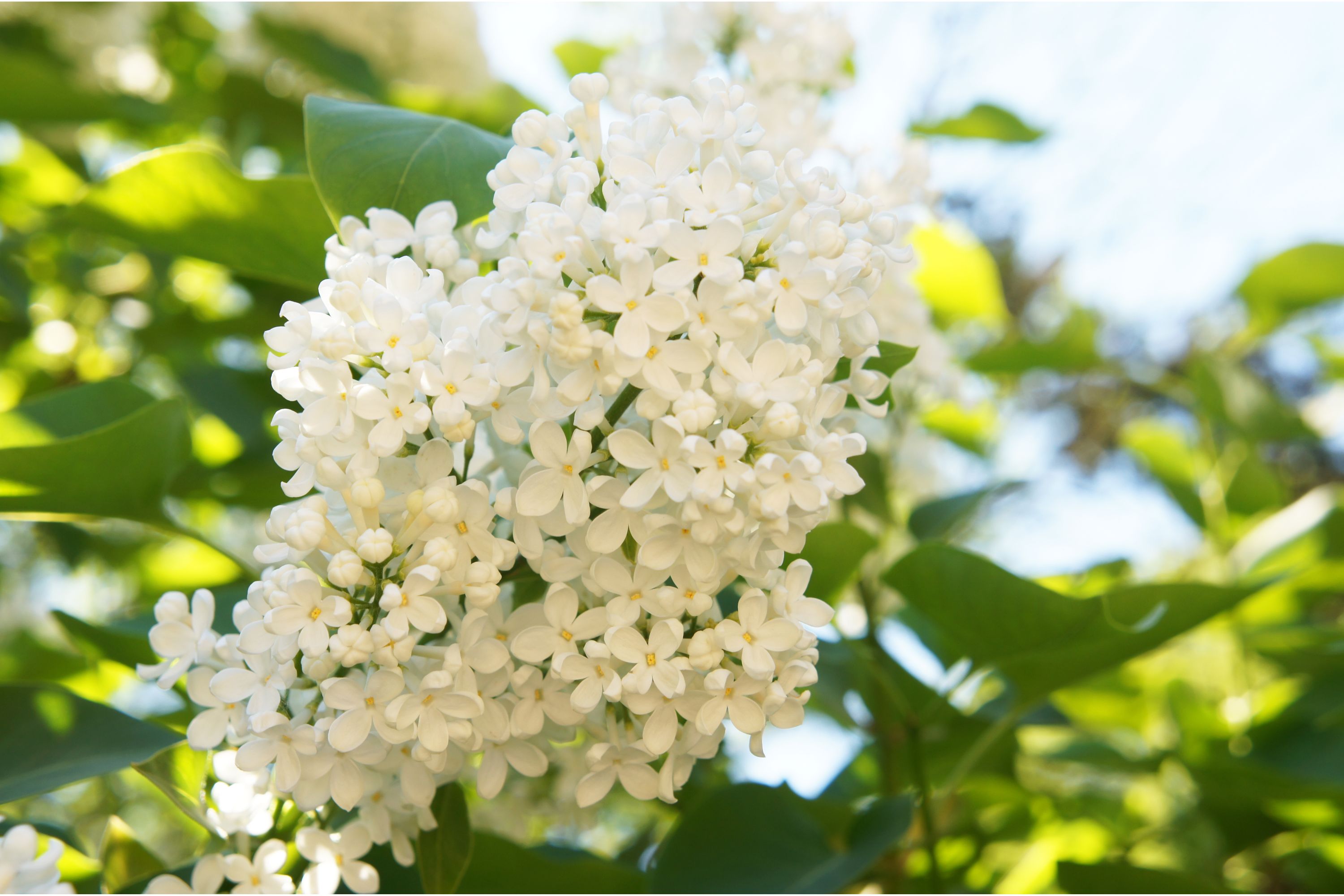Japanese tree lilac
(Syringa reticulata)

Description
Syringa reticulata, the Japanese tree lilac. is a species of flowering plant in the family Oleaceae native to eastern Asia, which is grown as an ornamental in Europe and North America. It is a deciduous small tree growing to a height of 39' (12 m), rarely to 49' (15 m), with a trunk up to 11.8" (30 cm), rarely 15.7" (40 cm) diameter; it is the largest species of lilac, and the only one that regularly makes a small tree rather than a shrub. The leaves are elliptic-acute, 1"-6"(2.5–15 cm) long and 1/2"-4" (1–8 cm) broad, with an entire margin, and a roughish texture with slightly impressed veins. The flowers are white or creamy-white, the corolla with a tubular base 0.16"-0.24"(4–6 mm) long and a four-lobed apex 0.12"-0.24" (3–6 mm) across, and a strong fragrance; they are produced in broad panicles 2"-11" (5–30 cm) long and 1"-8" (3–20 cm) broad in early summer. The fruit is a dry, smooth brown capsule (15–25 mm long), splitting in two to release the two winged seeds. Syringa reticulata is found in northern Japan (mainly Hokkaidō), northern China (Gansu, Hebei, Heilongjiang, Henan, Jilin, Liaoning, Nei Mongol, Ningxia, Shaanxi, Shanxi, Sichuan), Korea, and far southeastern Russia (Primorye). Syringa (lilac) is a genus of 12 currently recognized species of flowering woody plants in the olive family (Oleaceae), native to woodland and scrub from southeastern Europe to eastern Asia, and widely and commonly cultivated in temperate areas elsewhere. The genus is most closely related to Ligustrum (privet), classified with it in Oleaceae tribus Oleeae subtribus Ligustrinae. Lilacs are used as food plants by the larvae of some moth species, including copper underwing, scalloped oak and Svensson's copper underwing. They are small trees, ranging in size from 2 to 10 metres (6 ft 7 in to 32 ft 10 in) tall, with stems up to 20 to 30 centimetres (7.9 to 11.8 in) diameter. The leaves are opposite (occasionally in whorls of three) in arrangement, and their shape is simple and heart-shaped to broad lanceolate in most species, but pinnate in a few species (e.g. S. protolaciniata, S. pinnatifolia). The flowers are produced in spring, each flower being 5 to 10 millimetres (0.20 to 0.39 in) in diameter with a four-lobed corolla, the corolla tube narrow, 5 to 20 millimetres (0.20 to 0.79 in) long; they are monoecious, with fertile stamens and stigma in each flower.
Taxonomic tree:







